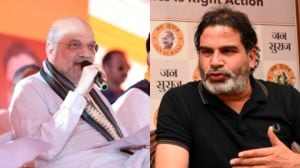Victims of apex court apathy
The Supreme Court is failing in its duty to provide a nationally efficient judiciary to the citizens. This has been happening even while the...

The Supreme Court is failing in its duty to provide a nationally efficient judiciary to the citizens. This has been happening even while the Supreme Court has been extending its direct hold over the key units of the national judicial system — the high courts and the district courts. But this centralised accretion of power by the apex court has only made justice difficult and inaccessible to the little Indian the judiciary is supposed to protect.
The accretion of power by the apex court vis-a-vis the high courts and the district courts has taken place in two ways. First,through emotional pronouncements dressed up as judicially binding statements. Secondly, by using constitutional provisions relating to appointments to high courts, transfers among high courts, selection of the chief justices of high courts and elevation to the Supreme Court.
The process of accretion of power by emotive judicial pronouncements started with the Nadiad chief judicial magistrate’s case. The Nadiad police in Gujarat handcuffedthe chief judicial magistrate, tried to rig a case of alcohol consumption and beat him up.
Instead of launching a public inquiry into the conduct of the then district judge and the high court, apart from that of the police, the apex court announced that it is the head of the national judicial family. Accordingly, it took upon itself the power of punishing those who commit gross contempt of the district judiciary in the country.
This was done despite Article 237 of the Constitution stating that the power of superintendence over the district judiciary belongs to the high courts and no legal provision can put the high courts administratively under the Supreme Court. The citizens learnt nothing of why the state judicial system had failed in its monitoring, administrative or judicial duties. Hence the citizens got no reforms in the state judicial system to this end.
The Supreme Court again rode on the emotional wave of public interest litigation, regardless of the powers of the high courts, district courtjudges. Once again no public inquiry was launched in these cases as to why the high court and the district court system failed to move for the protection of the bonded labour, the women and children victimised by police activities or rape. Consequently none of the necessary judicial reforms in the state judiciary was put on the public agenda by the apex court.
The high point of this emotive judicial route was when the Supreme Court “ordered” a suit of Spencer & Co. in the Madras high court to be disposed of by a specified date but “requested” the Delhi high court to dispose of a habeas corpus petition of a detenu expeditiously. When the Madras high court did not abide by the Supreme Court order, the apex court came to the point of almost taking contempt action with verses from the Gita thrown in.
But when the advocate filed an affidavit in the apex court to show how shabbily the Delhi high court had treated its request and refused to expedite the hearing, the Supreme Court did nothing.
This remindedof Longowal’s habeas corpus petition when after final arguments the date of judgment by the apex court was continuously postponed. Finally the Union Government freed him and the petition was dismissed as infructuous. Ayodhya saw the Allahabad high court being bypassed and the hawala case saw the entire police-cum-judicial system bypassed.
In both, the Supreme Court monitored directly and failed. It requires courage and wisdom to set up a public inquiry into one’s own failure and set in the correction mechanism.
The second route of use of the constitutional power of appointments, transfers and elevation is one of the saddest chapters of the Supreme Court. We seem to have come to a point where columnists and correspondents give public certificates of merit and integrity without any transparent public system for the same in the high courts and the apex court. Yet this is the big crucial minimum for all the emotive phrases — independence of the judiciary, the rule of law and an independent bar.
The netresult is that lakhs of small manufacturers and traders subjected to daily illegality cannot approach the Supreme Court because it makes no monetary sense. Today even a manufacturer subjected to a Rs one lakh excise duty confirmed by the excise tribunal finds that the Supreme Court judgment in L. Chandra Kumar’s case is utterly confusing as to whether he can approach the Supreme Court under the excise law or must first go to the high court. The cost involved in resolving this confusion is not worth the relief of Rs one lakh.
In the field of citizen’s physical liberty, the apex court has given a judgment in State of Haryana vs. Bhajan Lal by which a policeman has no other option but to register an FIR of a congnisable offence. The result of this has been that policemen generally refuse to register FIRs and petitions have flooded the high courts for directions to register an FIR.
The conditions of production and remand of the accused are in an abominable state in district courts with several hearings beingrequired for an accused to get only legible copies of papers to which he is statutorily entitled. The apex court is unaware of all this.



- 01
- 02
- 03
- 04
- 05




























